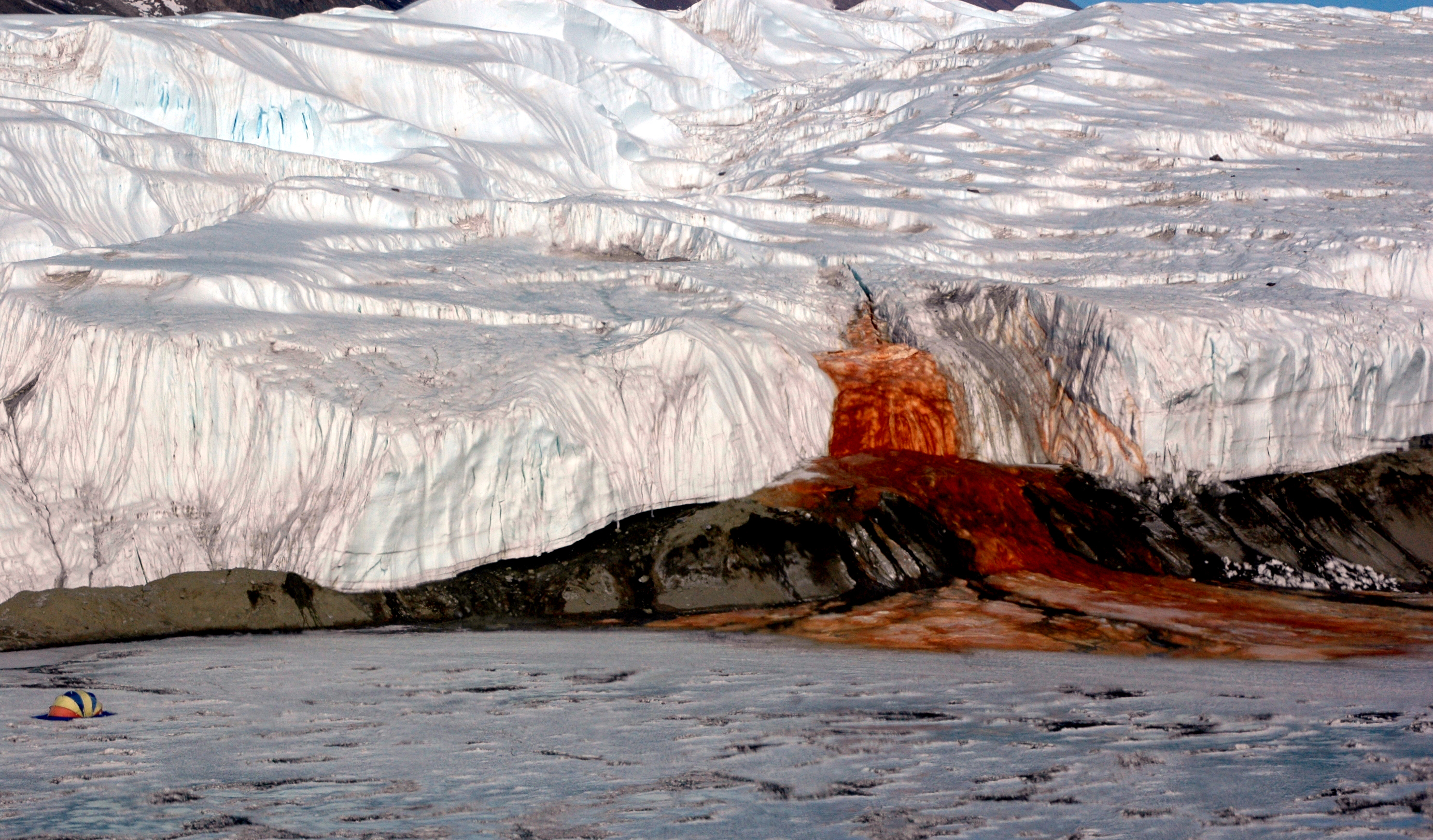
As we try and understand Mars, we often find ourselves studying extreme environments here on Earth that may hint at what may one day be found on the red planet. And one of the most extreme things we find in the extreme environments of Antarctica are the Blood Falls. These highly disturbing-looking features on glaciers occur where salty water from deep in the ice escapes out through the surface and deposits materials from those pockets of liquid onto the surface of the ice. It’s thought those liquid pockets may contain life, and this raises the question “is that life making the gruesomely colored ice?”
Researchers led by Elizabeth Sklute have published a new paper in Frontiers in Astronomy and Space Science that says nope; it’s just rust. Which is a bit of a relief really. The idea that life happily living in the ice was dying on the surface and making blood-colored grossness… I didn’t like that, and this is where I remind you, I’m an astronomer, and when stars die, it isn’t gross stinky — it is just dramatic.
Anyway, that red color? That is rust. In the salty fluid coming out are various minerals that contain iron, and when iron is exposed to the air, you get rust. Rust like we see just about everywhere on the red planet. According to Sklute, the kind of iron minerals they are finding “have been found to be ubiquitous in Gale Crater on Mars by the Curiosity rover … Finding what may be similar material in a natural environment on Earth is really exciting.”
More Information
PSI press release
“A Multi-Technique Analysis of Surface Materials From Blood Falls, Antarctica,” Elizabeth C. Sklute et al., 2022 May 30, Frontiers in Astronomy and Space Sciences




 Join the Crew!
Join the Crew!
 Escape Velocity Space News
Escape Velocity Space News
0 Comments